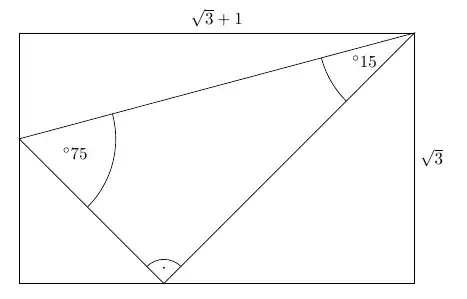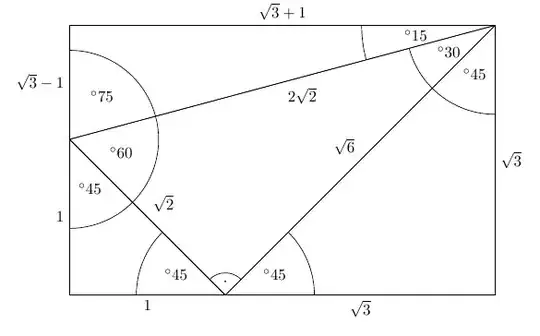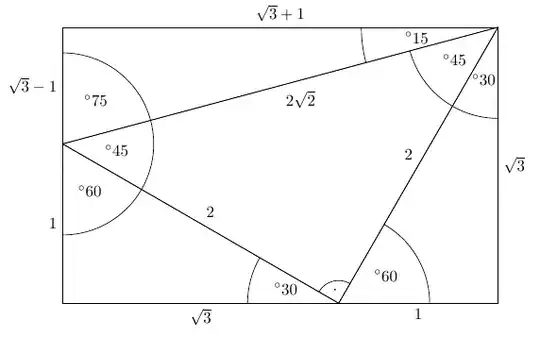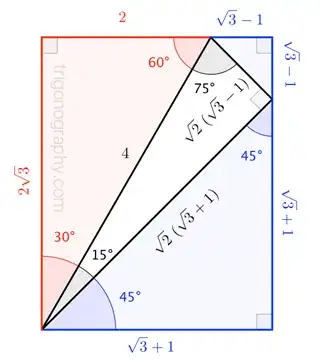Note. I answered the question on the assumption that the rectangle had to be $\sqrt{3} \times (\sqrt{3}+1)$ as in the third figure above. But Blue's answer shows that that may not be what the OP really needs.
Call the inner triangle I, the bottom right triangle II, the bottom left triangle III and the upper triangle IV.
The first thing to note is that triangles II and III are similar. Since the ratio of their hypotenuses is $\tan 15^{\circ}$, we deduce that the bottom of triangle III has length $\sqrt{3} \tan 15^{\circ} = 2\sqrt{3} - 3$. From this, we find that the remaining leg of triangle I is $4-\sqrt{3}$. Using the similarity of II and III again, the other leg of III is $11-6\sqrt{3}$. The missing leg of IV is then $7\sqrt{3} - 11$.
The Pythagorean theorem can be used to find the sides of the inner triangle. All the sides have roots inside roots and cannot be simplified further.
The upper angle of triangle II is $\arctan(4/\sqrt{3}-1)$, which Wolfram Alpha is unable to simplify.




